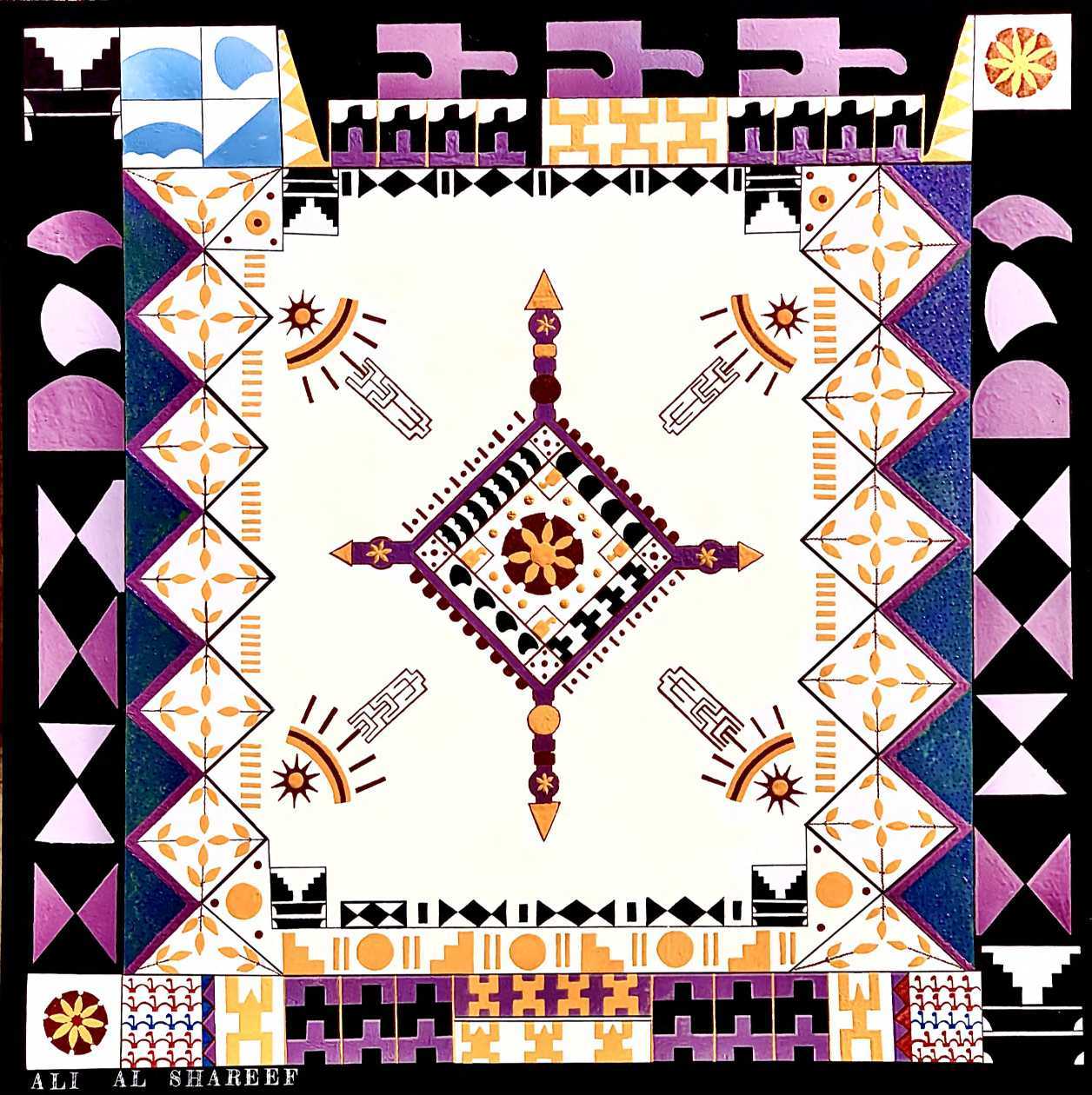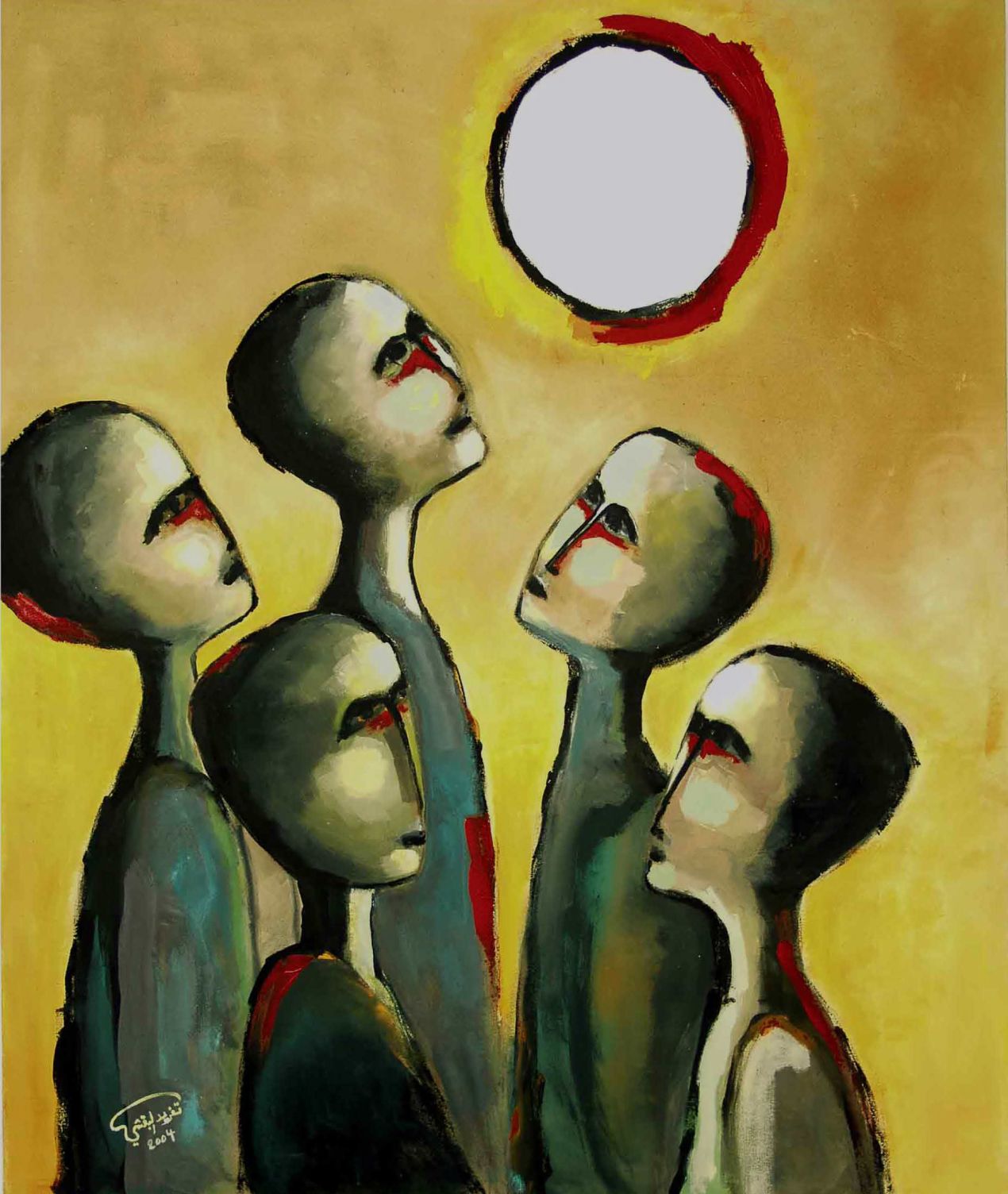A tour of five legends from saudi Arabia
Stories and legends’ from Saudi Arabia’s rock art. By renowned artist Ali Al-Shareef.
Dr. Maha Al-Senan, a Saudi art historian and cultural advisor
Saudi Arabia has long been a crossroad of ancient civilizations — a place of deep history, that is forever evolving. It is home to one of the world’s largest open-air rock art museums, unique carvings that capture history and legends, taking you back to different eras, as far back as prehistoric times. Each region of the Kingdom has its own collection of rock art, ancient writings and legends from the past.
From mischievous Jinn (the muses of the Arabs) to Al-Okhdood- (People of the Ditch) to the lost city of Gerhha and to the tomb of humanity’s grandmother (Eve), these are just some of the legends to discover in this article. From different parts of Saudi Arabia, the legends are linked in one way or another to religious, historical, cultural and social beliefs that may have influenced the Kingdom’s identity and the collective thinking over the years.
The special virtual dive into the five legends and archeological sites shared here was led by Dr. Maha Al-Senan, an art historian with a PhD in Art History and Archaeology from King Saud University, who has done extensive research on rock art and art history in Central Arabia and Saudi Arabia today.
Legends are those historical and folklore narratives “people tend to hold to as part of the belief, to explain or be closer to the unknown.” However over the years legends have been employed as “a political tactic featuring heroes, glorifying tribes especially at times of wars as a form of protection.” Socially, they have been used as “disciplinary tool, to control the crowd, spread fear, or even as simple as to discipline the kids,” she explained in an exclusive interview with Ithraeyat. With too many legends and stories to discover, here we introduce just five legendary sites— Al-Faw village, Hima Well, the city of Thaj, Al-Ula and old Jeddah, and their legends.
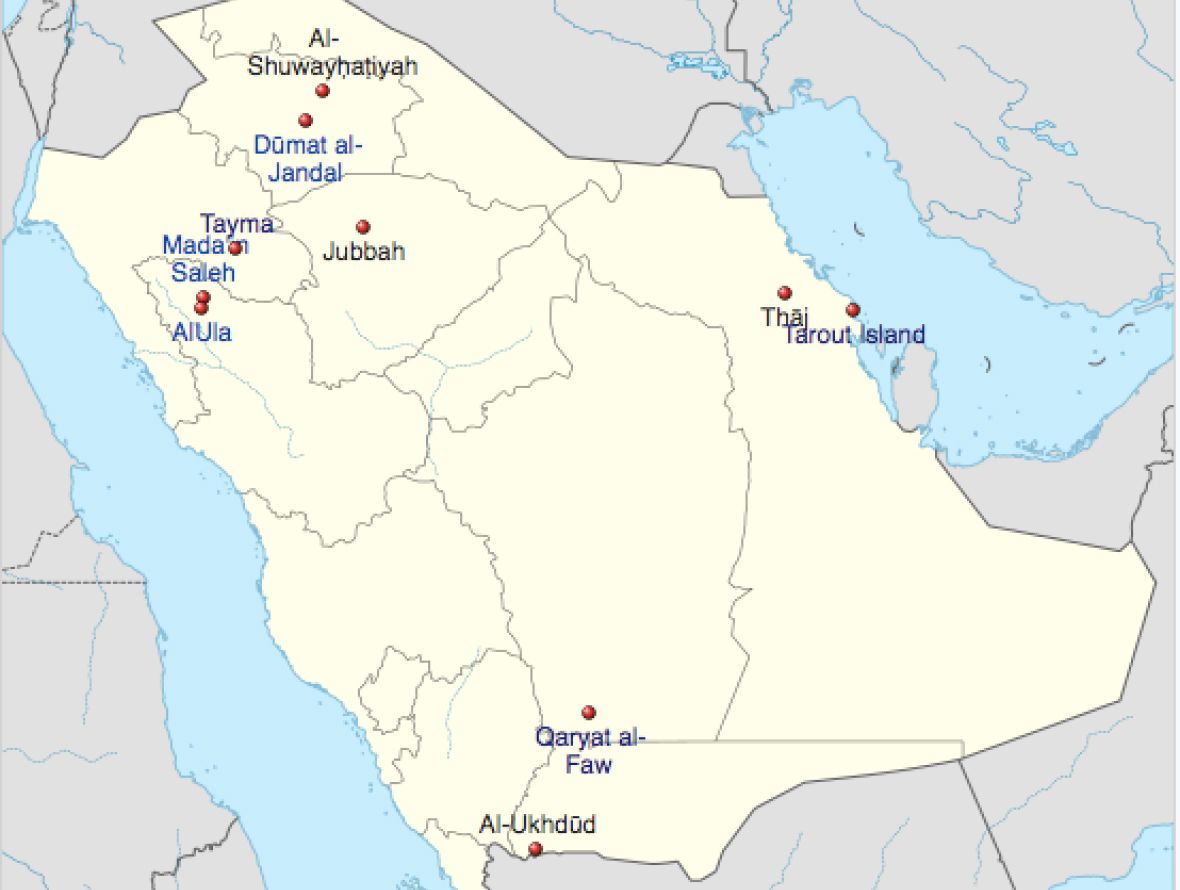
Location of ancient towns in Saudi Arabia
Al-Faw, a registered UNESCO world heritage site, was the capital of the first Kindah kingdom and dates to the 4th century BC. It is located about 100 km south of Wadi ad-Dawasir. It also hosted several other Arab kingdoms that lived there until the pre-Islamic era. The city’s archeological structure, along with the finest pieces of ancient Arabian art, wall paintings, statues, jewelry, pottery, ceramic and more found there are witnesses to the prosperity of that ancient commercial hub.
For Dr. Al-Senan, Al-Faw was the real representation of “a cosmopolitan city of that time, where various religions, people of different backgrounds, lived together in harmony.” One of its famous pieces she mentions is that of the painting of “Zaki” – “a small part of a wall painting that shows a man's head in a banquet scene with an old south Arabian inscription that captures the cultural richness.”
Some of Al-Faw masterpieces can be seen at the National Museum in Riyadh, while others are part of the prominent exhibition Roads of Arabia. a joint initiative of Saudi Aramco’s King Abdulaziz Center for World Culture (Ithra) and the Saudi Commission for Tourism and National Heritage (SCTH).
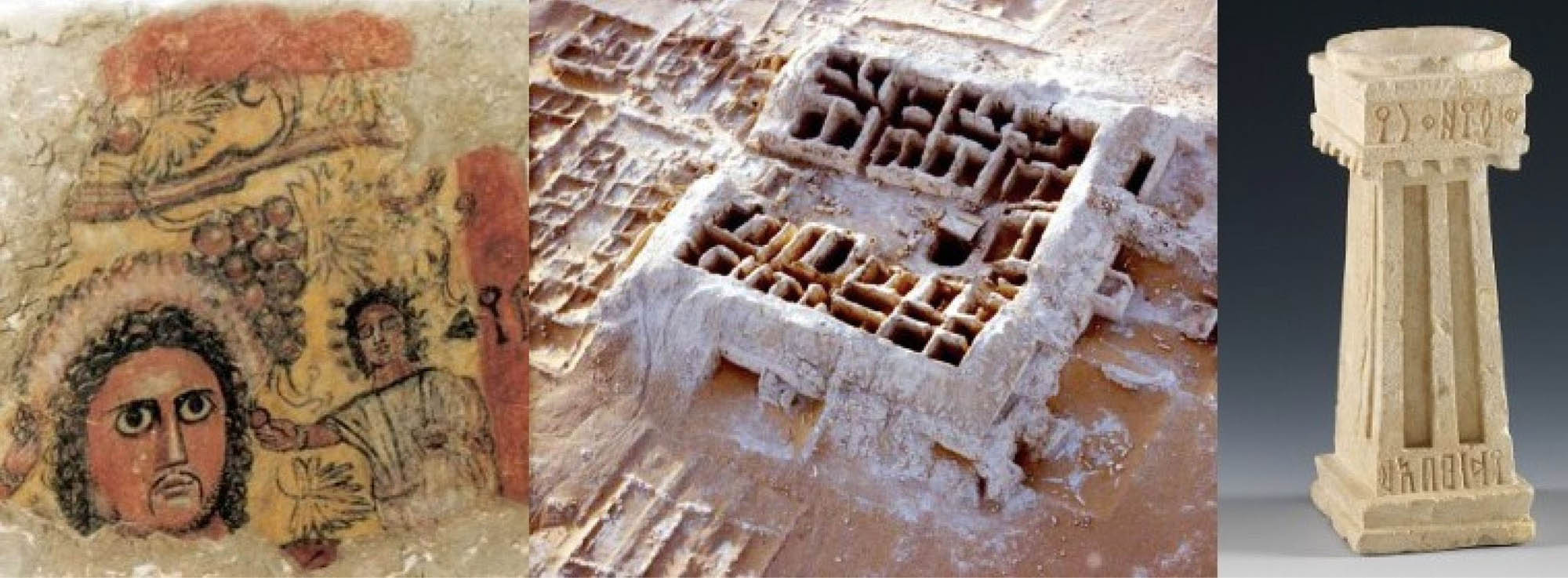
A few treasures from Al-Faw.
In Al-Faw lived the Arab legend Imru' Al-Qais Al-Kindi, famously known as the father of Arabic poetry. He was the son of the last Kindite King, who was killed by an enemy from another tribe, then in reaction Imru Al-Qais decided to take revenge and to regain his kingdom. His story is documented in his poems, with the famous line "Let us stop and weep,” which is one of the seven renowned Al-Mu’allaqat poems.
From that time on, Arab poetry became one of the means to spread the legends of tribes and their heroes. Additionally, another legend started here too, the legend of jinn as “The Muses of The Arabs.” These beings created from a “mixture/smokeless fire”—as mention in the Holy Qur’an—inspired Imru Al-Qais, and other pre-Islamic poets to perfect their poems. Those jinn incidents and adventures are well documented in some of his poems too.
Many archeologists and historians view Najran as a living historical museum, due to its various artifacts, calligraphy, ancient hieroglyphs, inscriptions dating back to the early Islamic period and before. Rock art of horses, camels, ostriches and others date back to the Stone Age. One famous site is Hima Well, which is preserved by UNESCO, and near it is where the famous legend of Al-Okhdood took place.
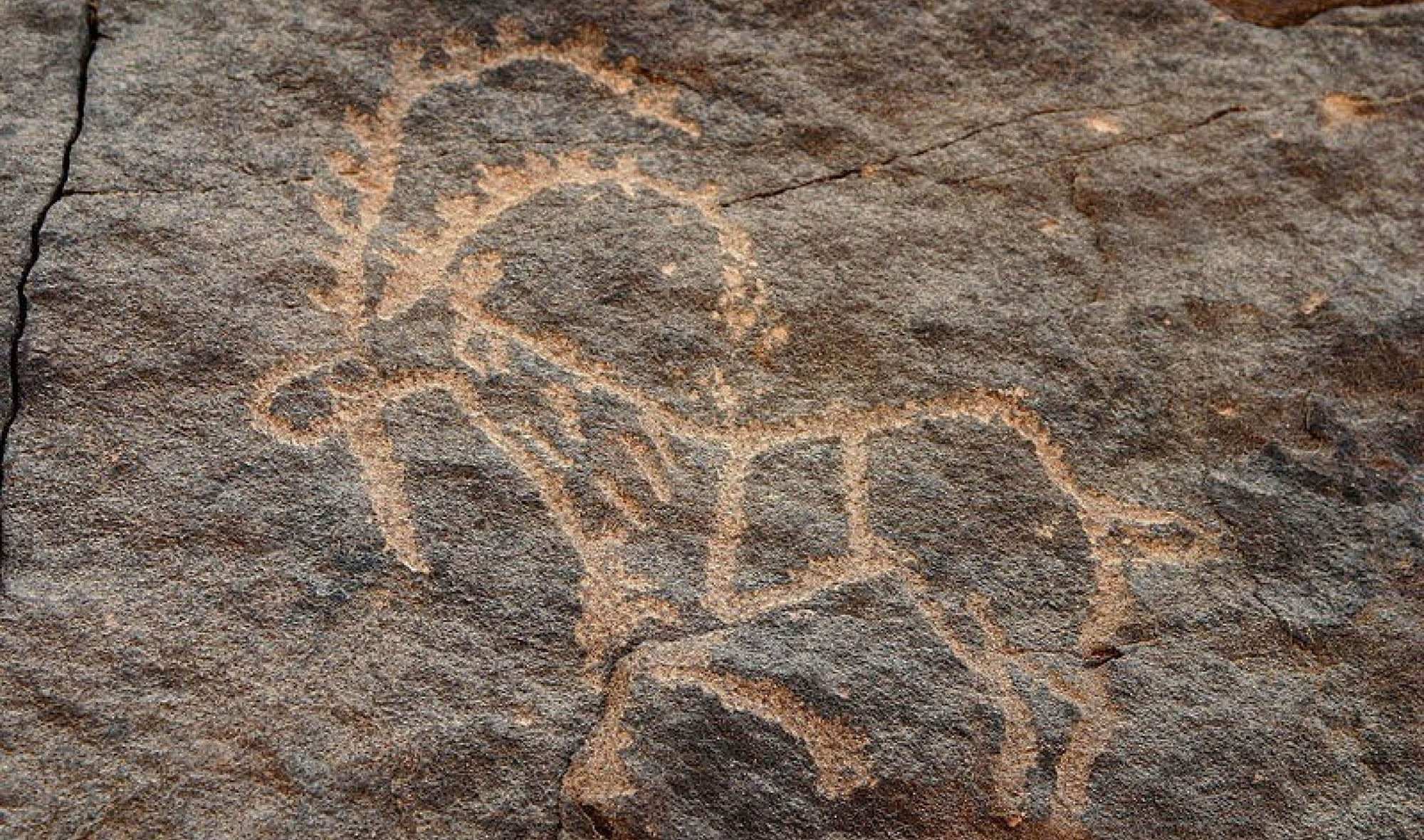
Petroglyph at Bir Hima.
Is over 7,000 years old, and it is where ancient civilizations of the Paleolithic and Neolithic lived (2500–1000 BC). It is located between Najran and Wadi Al-Dawasir.
It is known in Arabic as Bir Hima, and is described by Dr. Al-Senan and archeologists as “a rock art exhibition,” where drawings, along with ancient writings of the southern Arabian Musnad script, portray the life of ancient Arab kingdoms in southern Arabia. Their use of spears, sticks, arches and arrows for hunting, are all engraved along the mountainous terrain. They also display hunting drawings of dogs, camels and other animals. Yet for some, it is its Al-Okhdood legend that makes this place unforgettable.
This is a story that has been mentioned in Abrahamic religious texts, including the Qur’an in Surat Al-Burooj. The People of the Ditch were Christians who were thrown into a ditch by a king who set them on fire after they refused to convert to his religion. The event is believed to have occurred in 520 or 523 ACE, in the time of the Himyarite King Dhu Nuwas, who wanted to spread Judaism in his Kingdom and killed all who refused to convert. The ditch today is a witness to that story of courage, and a reference for many when it comes to remaining true to one’s faith in face of hardship.
More than 2,000 years old, the site is rich with artifacts and remnants of ancient drawings and engravings on stones, such as a human hand, a horse, a camel and snakes carved, in addition to remnants of a Mosque.
Ancient civilizations started to live in Thaj from the Iron Age, when people began to immigrate there from the Achaemenid and Macedonian empires. Thaj, located to the west of Jubail, was part of the Kingdom of Dilmun from about 2050 BC onward, that functioned for centuries as a vital trading port on the Arabian Gulf.
“Qatif was one of the oldest settlements, Tarout Island and its famous castle reflect that old heritage and its furious fight against foreign occupation, maintaining its vital role in the trade route,” said Dr. Al-Senan. The princess of Thaj and the city of Gerrha, are ones of its most famous legends.

Treasures from Thaj
The city of Thaj is an archeology treasure where unique pieces of jewelry, gems and golden artifacts were discovered in tombs that are more than 2000 years old. One of its most famous tombs, is that a six-year-old girl believed to be a princess, in which archeologists found a small mask, a glove, a belt and several necklaces - all made of pure gold—as well as other exquisite jewelry around her. One piece in particular is a necklace featuring the girl’s face wearing a mask, surrounded by precious stones. According to Dr. Al-Senan, those treasures reflects the important cultural and industrial situation of the Kingdom then, yet no one knows the princess’s story for sure.
Some of those funerary treasures were on display at the Roads of Arabia exhibition, and some were given to the National Museum in Riyadh as well.
The story of the princess is open to a lot of speculation, especially with the discovery of the 17 kilograms of gold with her, leading many to believe that solving her mystery could lead to the discovery of the lost city of Gerrha.
The Arabian El Dorado? Gerrha was one of the richest and most important trade cities in the northeastern part of Arabia and the city’s wealth was known throughout the ancient world. Its traders controlled the distribution of incense and other materials to Mesopotamia, Anatolia, Persia, Greece and other regions. Its residents enjoyed great wealth as the economic engine of the Gulf region, and a trading and glamorous hub of that time.
The Greek geographer Strabo (born c. 64 bce, Amaseia, Pontus—died after 21 ce) wrote about it and called it the "white-walled city,” but no one could identify its exact location. Dr. Eid Al-Yahya, a presenter for the TV show “In the Footsteps of Arabs,” who traces old civilizations in Arabia, believed that Thaj is possibly “the site of ancient Gerrha” based on its wealth, strategic location, and overflowing natural water supply.
Al-Hijr, named Hegra and Madain Saleh is an ancient archaeological UNESCO World Heritage site, located 22 kilometers to the north of Al Ula municipality in the Madinah
Al-Munawara province. It was the capital of the kingdoms of Dadan and Lihyan, in the 6th-2nd centuries BCE and a trading hub of the Nabataeans, controlling the trade of precious frankincense, incense, myrrh and spices. It is considered by archeologists the largest living museum of more than 100 Nabataean tombs, inscriptions and cave drawings, historic dwellings and monuments, both natural and human-made. Ekma Mountain is seen as a history book of those ancient kingdoms and the largest open library in Saudi Arabia, containing special writings, drawings, and inscriptions that documents scenes from those civilizations. Dr. Eid Al-Yahya dedicatedseveral episodes of his show just to highlight some of its Nabatean writing and treasures.
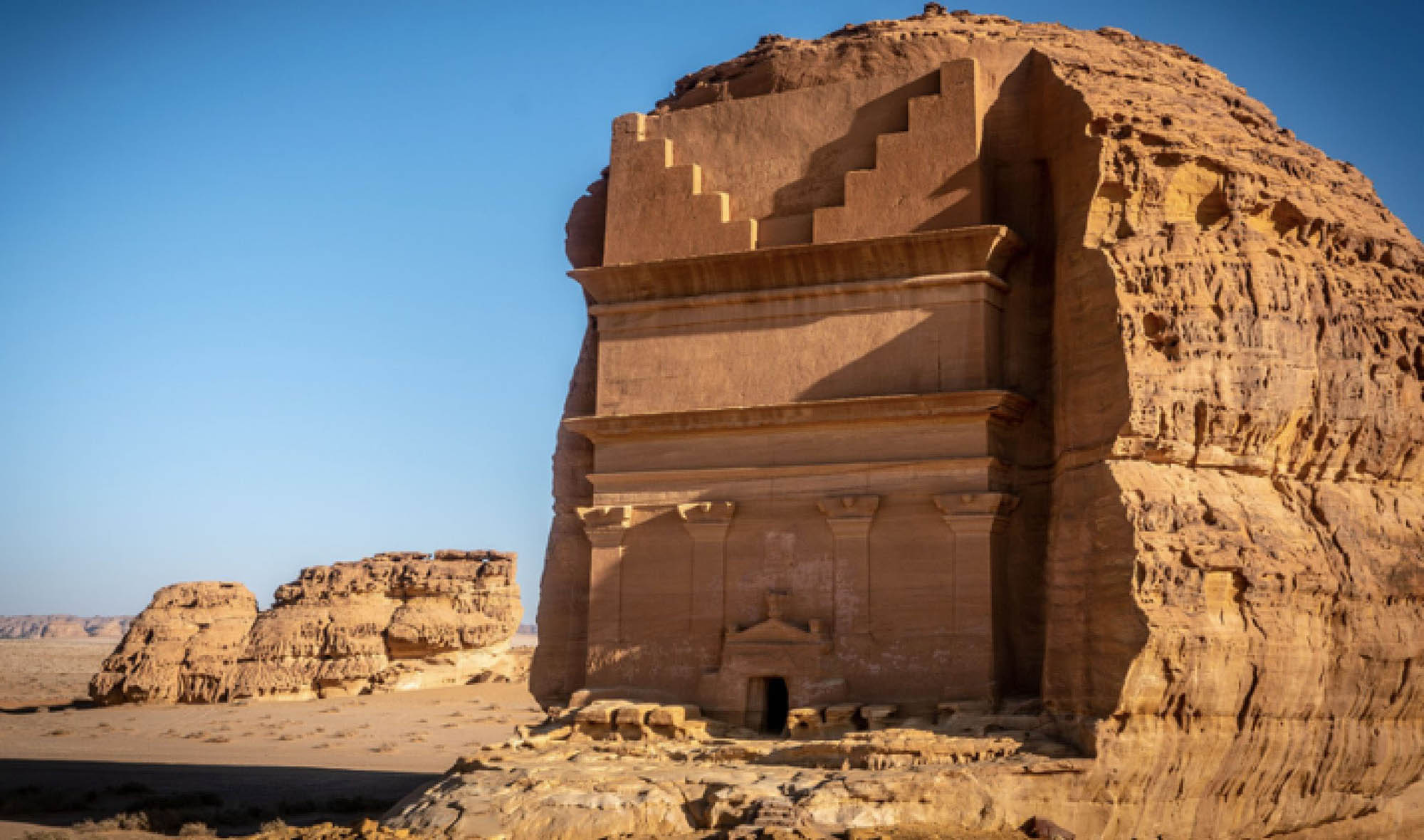
Madaen Saleh
in the Qur’an with a chapter (sura) named after it- Surat Al-Hijr. Al-Hijr is also called Madain Saleh, which means the cities of Saleh after prophet Saleh who was sent to the people of Thamud who used to live in Al-Hijr at that time.
According to the Islamic text,the people of Thamud were punished by God for their idol worshiping, disobedience of his prophet Saleh, and slaughtering his miracle the She-Camel that he brought out of a rock. Thamud’s story is mentioned in detail in the Qur’an (15:80-84). The people of Thamud were punished by an earthquake and lightning blasts. Their site is a symbol of their mighty past and greatness. At the same time, many believe the site to be cursed and whoever stays there will be cursed too.
The greatness of Thamud and the Nabataeans are also engraved in numerous petroglyphs and rock art in Jubbah, Hail, North Region of Saudi Arabia.

(An art piece depiction of Salih inviting his people to see the She-Camel, from an illuminated manuscript version of ''Stories of the Prophets By author Abū Ishāq Ibrāhīm bin Mansūr bin Khalaf of Neyshābūr in the 12th century AD)

Old photo of Jeddah
Jeddah being the portal gate to Makkah for Muslim pilgrims, makes it a remarkable multicultural commercial center and a place for those folktales to thrive. Many of the legends originate at Albalad, a UNESCO world site known for its heritage buildings, souks, open squares and mosques that date back to 3rd Caliph of Islam.
For some historians The Tomb of of Eve (Hawa in Arabic), the first woman created with Adam, is located in old Jeddah. They believed that the biblical and Qur’anic “grandmother of all humankind” is buried there. Some even said that the city name ‘Jeddah’ is originates from Arabic word “Jaddah” which means grandmother after Eve “our grandmother.” Although, there is no verified archaeological evidence to support this claim, the legend remains alive till today and is passed on by generations. The place was a must visit for many pilgrims seeking blessings, before the location was closed by authorities.
Since they are mentioned in the Qur’an, there are many legends and beliefs concerning Jinn. Verses in Al-Jinn chapter of the Qur’an mention how the jinn gathered one night to hear Prophet Muhammad’s (Peace be Upon Him) recitation of the Qur’an. It is said the Prophet then met with their leaders and accepted their embrace of Islam. The place in which that incident took place stands the Masjid Al-Jinn. It’s one of the oldest and widely visited mosques in Makkah today. The jinn have been forever part of the Arab collective culture. Several places in Arabia are named after them and many mysterious legends, stories, folklore tales are created about them
In Wadi Al-jinn (Valley of Jinn), in Hijaz, many will tell you about the jinn’s magnetic power that move cars without drivers touching them, even when the engines are switched off. In Jabal Herfa in Asir, many believed it’s one of the Jinn kingdoms and trying to visit it at night will turn you to either an outstanding poet or you will lose your mind. In Jizan, many consider it the place whereKing Solomon jailed his jinn, arguing that its name even suggested it, coming from Arabic phrase “Jaza Al-Jan: which means the punishment/fate of Jinn.” “These legends thrive whenever people can’t explain scientific phenomena, solve some issues, or need an excuse for a wrongdoing,” said Dr. Al-Senan.
Many Saudi researchers, writers and artists have documented those legendary stories. Writer Raja Alem and her sister Shadia Alem in their book Jinniyat Lar dedicated paintings and texts to jinn legend. Researcher Mohammad Al-Ghamdi has gathered famous verbal folktales from the elderly in Asir and documented them in his book,“Thakerat AlFawjeh Almansiaya” “the memory of the forgotten catastrophes.
” Meanwhile Dr. Lamia Baeshen documented Hijaz folklore tales and songs in her book Al-Tabat wa Al-Nabat. She also turned the legend of jinn into an immersive theater Bait Al Dahaleezi, where a legend inspired by Al-Balad folklore takes place in a 200-year-old house and gives visitors a chance to solve a mystery.
“Documenting and preserving our legends is part of preserving our cultural identity,” said Dr. Al-Senan.
Sheikha Al-Dosary is a journalist and storyteller specialized in Saudi culture and founder of Saudi Women Stories. A storytelling platform for women in Saudi Arabia to tell their stories, show their diversity, and present their inspiring journeys to change and success.
